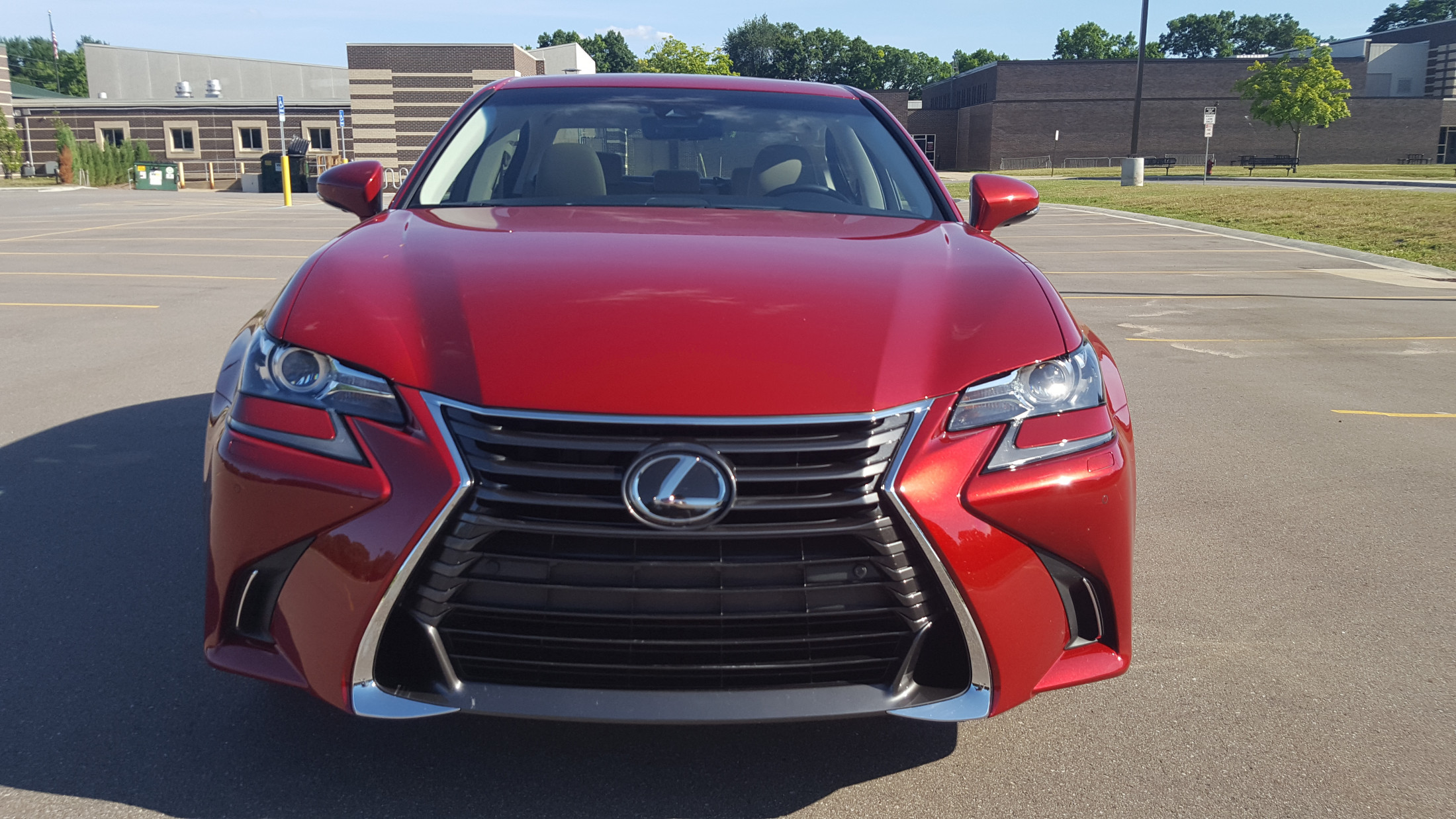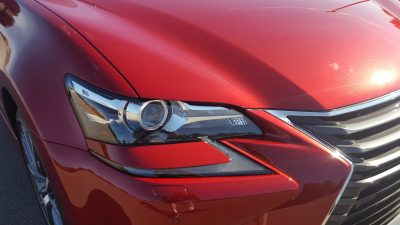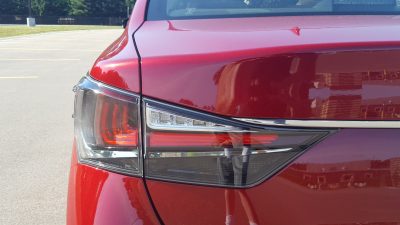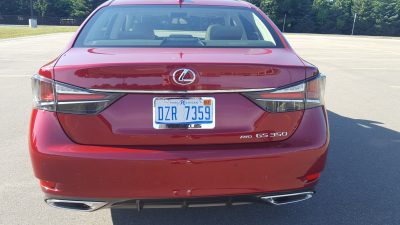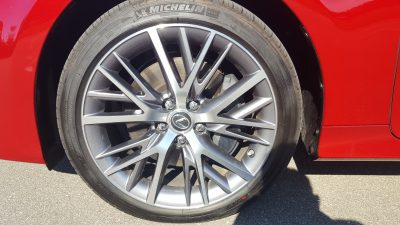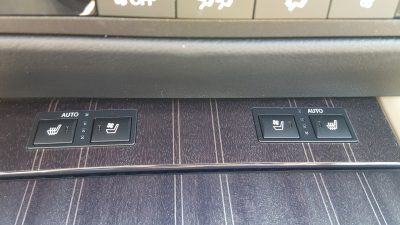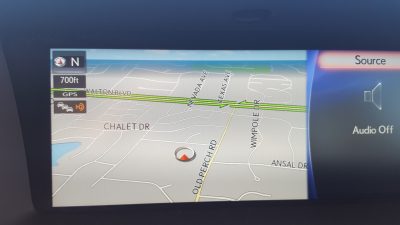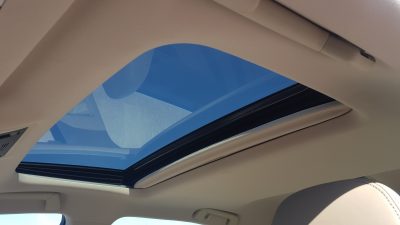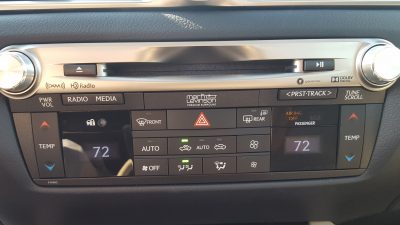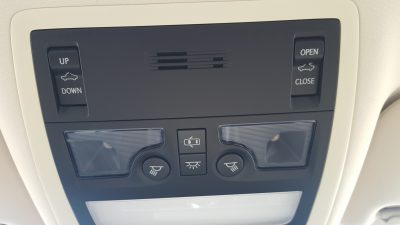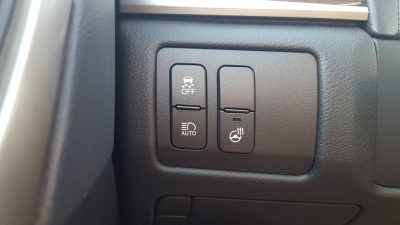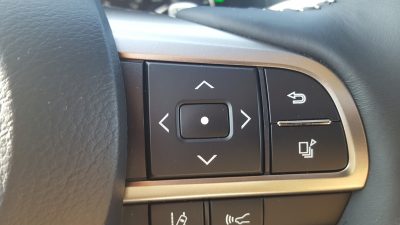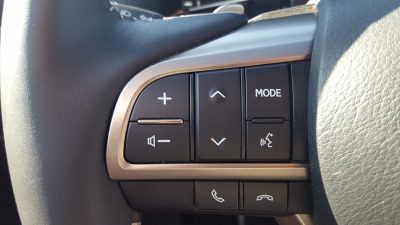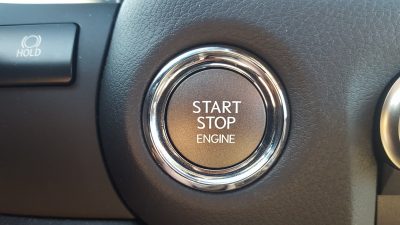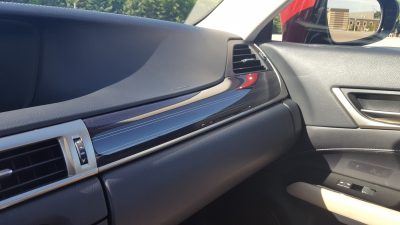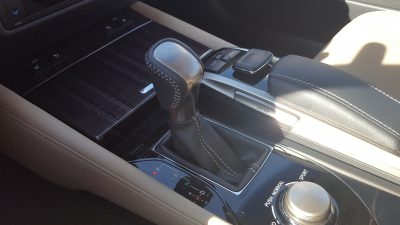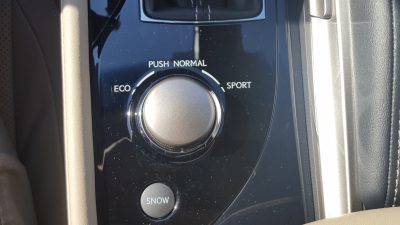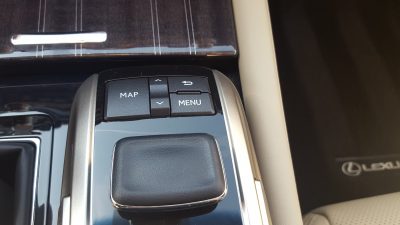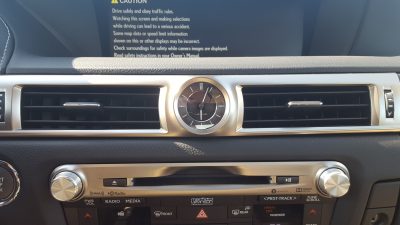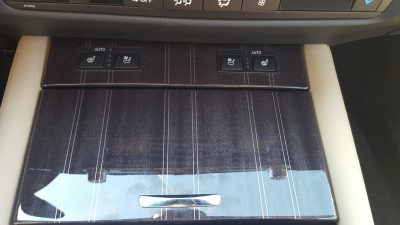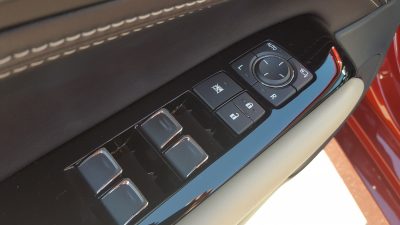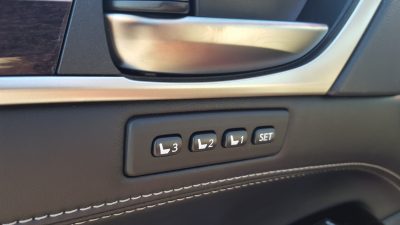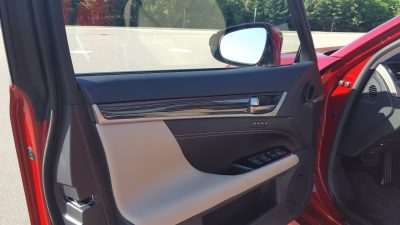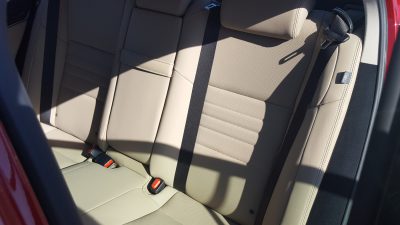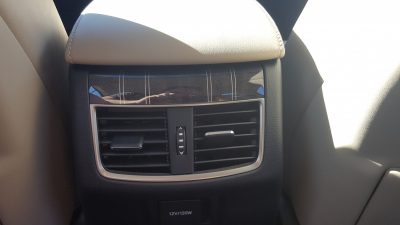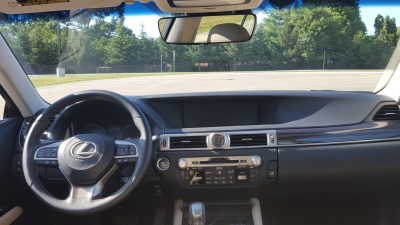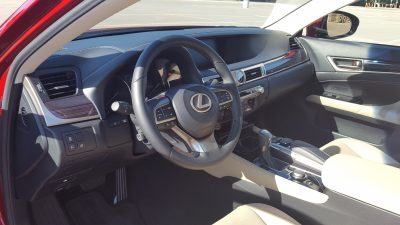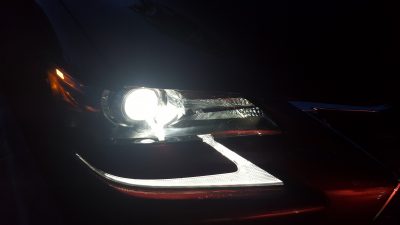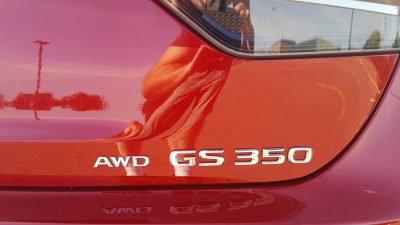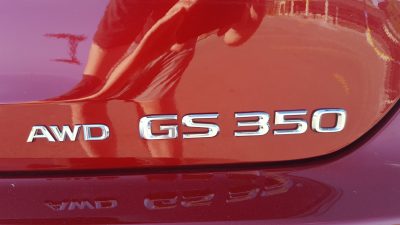When we last checked in on the Lexus GS350, we remarked that it was a luxury sedan that certainly had its own unique take on luxury, but was rapidly being left behind by rivals like the Audi A6, BMW 5-Series, and the Mercedes-Benz E-Class. Lexus has so far not confirmed if the GS is indeed living on for a new generation as the brand focuses on rapidly securing its hand in the rapidly exploding SUV and CUV segments. But like a grizzled veteran the GS (along with the equally long in the tooth RC coupe) continue to soldier on for the 2019 model year. But is it indeed time for the GS to formally hang up its boots, and step aside for newer more profitable entries? Or does this old dog still have a few new tricks left in its hat to help it endure and draw in more buyers?
An Aging Canvas That Still Holds Up Well:
It’s no secret that the GS’s exterior styling is rapidly aging when compared to its rivals, but despite this, the GS still manages to find more subtle ways to win over its audience. Our tester had very good panel fit and finish, and while the polarizing spindle grille is the ultimate love it or hate it affair, we did like the way our tester’s red paint meshed with the side flanks of our tester, as well as the subtle curves that lead rearward towards the trunk. The taillights still look a bit too Fast & The Furious for our tastes, but they do help blend more aggression into the aging lines, and still make the GS a rather handsome canvas when viewed from certain angles. The lone wart is the rim design, with the hoops this time around featuring a design that is far too complex and way too visually jarring for our tastes. Thankfully a quick look through the Lexus ordering guide reveals wheel options that look far better, and we highly recommend that buyers should look there to see what design works best for them.
As mentioned, the GS is rapidly aging, and as a result is falling behind key rivals. The Mercedes E-Class and Audi A6 for example have already undergone at least one major update during the GS’s time on the market, while the BMW 5-Series has also received its fair share of attention during the GS’s ongoing lifespan. This quicker pace of updates causes the GS to fall roughly into the background of the segment, and as a result it has lost some relevance with customers. It’s a shame since the GS still manages to have some charisma baked into its broader design language, and when looked at without the polarizing spindle grille, it could still pass itself off as a relatively new offering even in a world where luxury SUV and CUV offerings are rapidly becoming the number one focal point on buyers minds. Like before, the look does sharpen up somewhat when buyers opt for either the F-Sport package or the hardcore all in GS-F model and its double stacked exhaust tips. Either way, there is still some good to be found here, and when looked in ways beyond its initial visual presentation, the GS still has a humble character to it.
Sadly The Interior Doesn’t Quite Pull The Same Trick:
While the exterior’s age is partially masked by some of the more subtle design elements that Lexus designers have added to the design, the same praise cannot be said for the interior. It’s not that the interior is marred by low quality materials, or goes way out of its way to try and stir up attention. Rather, the problem here is in an era where mobile devices and the connectivity that comes with them are becoming more ingrained into many interior designs, the Lexus is still woefully behind segment benchmarks. For instance, while Lexus’s touchpad controller is decidedly more sleeker looking than the clunky and haphazardly engineered mouse controller that defined older Lexus models, it falls well short of being the perfect infotainment solution that customers need for their daily commute. We really wish that Lexus will finally add a formal control knob for its system because the screen that is present here is very crisp, and the menu and various functions (despite being too crowded together) are logically placed in the home screen and many of the functions are easy to use. Android Auto and Apple CarPlay are not available on the GS, but while Lexus has said that it is in the process of adding these capabilities to current Lexus models like the RX, UX, and more, the GS’s uncertain future as well as its dwindling sales numbers could motivate Lexus to skip the ailing model in this recent tech push.
But amid all the signs that point to just how stagnant this interior is, this stubbornness to stick to the core fundamentals does help give occupants the opportunity to experience some of the few diamonds in the rough that can be found when you take the time to find them. The seats for example are still very comfortable, and while others in its segment may have more performance oriented thrones with more defined side bolstering and lumbar support, the comfort first nature of the seats is a nice departure from this tired trope, and the squishy leather and the available heated seats really helped us shed layers of stress after a long hard day out on the town. Head and legroom are quite abundant in the front, but like others in its breed, the rear seats are tight for taller occupants and are best left for children or short adults on long jaunts.
We also like how roomy the trunk is, and the GS continually reminded us that it is just as capable of hauling all kinds of stuff as its competitors. This included loads of groceries, assorted odds and ends, and even some items we took to some of our neighbors and friends. But ultimately time is a rapidly moving aspect of life, and with the world moving around it quicker than ever before, the interior of the GS in all of its forms is in danger of being eclipsed by its competitors, and in the process will not have the perceived freshness and state of the art feel that many luxury buyers come to expect when they buy a new luxury offering.
Aging V6 Still Has The Beef:
Performance for the Lexus GS comes from three different engine choices. While the 5.0 liter V8 is limited to the F model only, buyers looking to browse in the lower tier of its model ladder will have the other two engines to choose from. The first is a 2.0 liter turbocharged four cylinder engine that is good for 240 horsepower, and was introduced initially in 2016 on the GS200t before being moved into the GS300 model in 2018 to try and simplify ordering for customers. Our tester arrived with the familiar 3.5 liter naturally aspirated V6. We have sample this engine in other Lexus offerings including the smaller IS, and the RX. In the GS, it follows the IS 350’s lead and produces 311 horsepower which is still a strong figure. But while the V6 makes all the right noises and still generates a respectable amount of oomph in the middle and the upper reaches of the rev band, it lacks the smooth power delivery and the broader low end push that has become a key trait of many turbocharged offerings. The V6 is attached to an eight speed automatic that is a smooth operator most of the time, and also allows the car to make the sprint to 60 mph in 6.9 seconds. But there were moments where we caught the otherwise confident eight speed sleeping on the job when it came to gear hunting, which sometimes caused it to give us the wrong gear during certain driving situations. When compared with its German rivals, the V6 is a bit of a tough sell in a turbocharged world, and while it does have a high degree of eccentric charm and the simplicity of naturally aspirated power delivery, these days, its like bringing a knife to a laser fight and as a result it lacks the allure that defines other engines in the luxury car segment.
Handling in our tester was smooth and very neutral, though buyers looking for a more involving commitment will either have to opt for the range topping F model, or go for one of its rivals. With the potent platform that lurks underneath the GS’s skin, its a real pity that the suspension doesn’t quite allow it to live up to its full potential, while intrusive stability and traction control systems end the fun way before its supposed to. However, treat the GS with kid gloves, and these performance derived frustrations rapidly transition into a cushy ride that does a good job of smoothing out many road imperfections, and also rewards the driver with very predictable and controllable turn in behavior. Steering in our tester was precise, but we wished there was less boost in the tiller in certain drive modes, and we found ourselves switching things into Sport mode to try and bring some order to the steering experience. The leather wrapped wheel itself fits nicely in the hands, and it feels great too especially in low speed sweepers.
Braking in our tester was smooth and composed, but we really wish the pedal had more bite to help improve communication between your feet and the system when driving the GS350 in a brisk manner. It’s even more apparent when you drive rivals like the BMW 5-Series and the Audi A6 side by side, with both of these models offering more poise and confidence in their braking delivery especially when pushed beyond the disly rigors of urban commuting.
Value Quotient:
Pricing for the 2019 Lexus GS350 is still in the midst of many in its segment despite the obvious age gap separating it from some of its rivals. Base GS350 models start at a relatively reasonable $51,065 with F-Sport package equipped models starting at a slightly higher $52,760 Our non F-Sport equipped tester arrived with a healthy injection of optional equipment and as a result, ended up with a final sticker of $57,480. This includes the $1,025 destination fee, and is perilously close to the $60,000 barrier. The two priciest options on our car were the $1,380 Mark Levinson audio system, the $1,760 premium package, and a sprinkling of other options. This is roughly within segment benchmarks, but again it also highlights some of the things you dont get or are missing from the GS. For example, BMW’s I-Drive system brings more polish and expected extras to the 5-Series, while the Audi’s optional 3.0 liter supercharged V6 makes more power. In short, all of its rivals bring more equipment, more performance, and even more value to the plate than the GS, and this serves to cause the GS to fall further and further out of contention.
When you look at all the obstacles that are firmly in front of the 2019 Lexus GS, it seems that the end is indeed in sight for the four door. Lexus has already pulled the plug on the GS in Europe, and it is only a matter of time before it hangs up its boots in the U.S. It will be a shame when it does go though since the GS F is one of the more intriguing performance sedan offerings on the market, and lower trim GS models still retain there ability to hold there own in the marketplace. Here’s hoping that whatever takes over the GS (utility or otherwise) will be able to play a bigger role in Lexus’s broader sales plans.

Carl Malek has been an automotive journalist for over 10 years. First starting out as a freelance photographer before making the transition to writing during college, his work has appeared on numerous automotive forums as well as websites such as Autoshopper.com.
Carl is also a big fan of British vehicles with the bulk of his devotion going to the Morgan Motor Company as well as offerings from Lotus, MG, and Caterham. When he is not writing about automobiles, Carl enjoys spending time with his family and friends in the Metro Detroit area, as well as spending time with his adorable pets.

